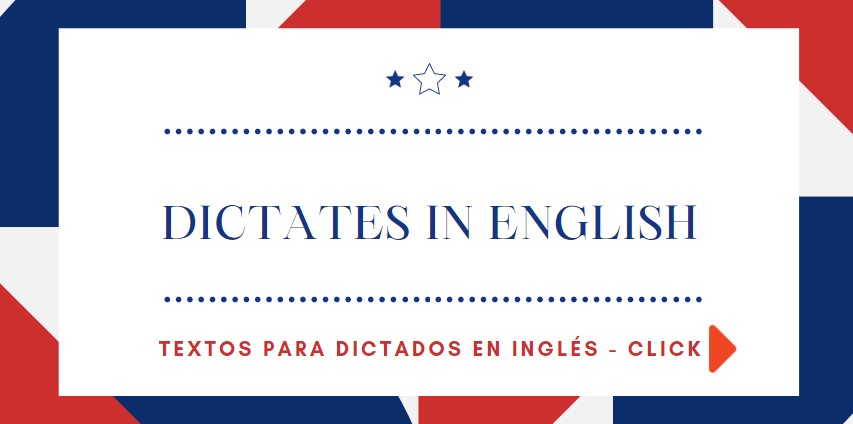
El Imperativo en Inglés - Imperative - Dar órdenes e instrucciones
Read:
Liza: Claire, be careful! Don't play with that, darling.
Claire: Yes, it's nice
Liza: Stop it, Claire! Don't touch it! Come here!
Claire: No, no, no
Liza: Don't talk like that to me! come on, Claire! be a good girl and play with this box.
**Expresiones:
be careful! - ¡ten cuidado!
be a good girl! - ¡se una buena chica!
darling - cariño

¿Para qué sirve el imperativo en inglés?
El imperativo se utiliza sobre todo para dar órdenes, pero también para hacer sugerencias, hacer una petición o hacer una propuesta.
El imperativo se utiliza:
- Para dar ordenes:
Stop that ball! - ¡Para esa pelota!
Don't touch that! - ¡No toques eso!
- Para dar instrucciones de cómo hacer algo:
Put the flour in a bowl, break the eggs... - Ponga la harina en un cuenco, rompa los huevos...
- Para dar instrucciones de cómo llegar a un lugar:
Go along this street, turn left... - Sigue/siga por esta calle, tuerce/tuerza a la izquierda...
Cómo utilizar el imperativo en inglés
El imperativo en forma afirmativa
En la forma afirmativa, basta con poner la base verbal tal cual, sin conjugarla. Es como el infinitivo, sin el TO delante. Por ejemplo, para decir "Hazlo", se diría " Do it".
Para la forma afirmativa se utiliza el infinitivo:
Infinitivo: To look (mirar) - Imperativo: Look! (¡Mira!)
Infinitivo: To run (correr) - Imperativo: Run! (¡Corre!)
Eat your breakfast. - Desayuna
Help me! - Ayudame
En la primera persona del plural, ("nosotros"), utilizamos Let's + verbo.
Ejemplos:
Let’s go to the cinema! - Vamos al cine
El imperativo en forma negativa
Para utilizar el imperativo en la forma negativa, seguimos la misma lógica que para la forma afirmativa, pero añadimos un auxiliar negativo (don't o do not).
Para la forma negativa se antepone do not (don't) al imperativo:
Don't look! - ¡No mires!
Don't run! - ¡No corras!
Don’t read this book. - No leas este libro.
En la primera persona del plural (de nuevo, el "nosotros"), diremos: Let’s not + verbo, o Don’t let’s + verbo.
Let’s not get off the train now. - No te bajes del tren ahora.
Read:
Helen: Hello, Andrew, can I help you?
Andrew: Yes, of course. Here's a picture of my mother. Put it in the photograph album, Helen.
Helen: On a new page?
Andrew: Yes, please.
Helen: Give me that old photograph over there.
Andrew: Who are they?
Helen: They're your aunt Sharon and your uncle George.
Andrew: Good, put them on this page and write their names under them.
Helen: Look at this, Andrew. It's very interesting.
Andrew: What is it? Give it to me.
Helen: It's an old photograph of us.
🔆 También te puede interesar:
- El comparativo y el superlativo en inglés
- Preguntas con WH-Questions 01 - What, where, why, who
- Preguntas con WH-Questions 02 - When, Which, Whose, How
- Cómo expresar cantidades en inglés
- Adjectives - Los Adjetivos en Inglés
- Uso de some / any acompañando nombres contables/incontables
- Modal verbs - Verbos modales en inglés
- El tiempo futuro en inglés
- Present Perfect Progressive - Presente perfecto progresivo
- Present perfect - El presente perfecto inglés
- Pretérito progresivo o continuo en inglés
- Simple past - El pretérito o pasado simple en inglés
- Presente continuo - Forma Afirmativa - English grammar
- Presente continuo - Forma Negativa
- Puntuación en inglés - All about punctuation in English
- Los verbos Auxiliares en inglés - Auxiliary Verbs
- Verbos irregulares en inglés, la lista que debes conocer
- Cómo decir la fecha en inglés - How to say the date in English
- Construir frases simples - To build a simple sentence
- Nombres contables e incontables en inglés
- Presente continuo - Forma Interrogativa
- Cómo Preguntar y decir el precio en inglés

